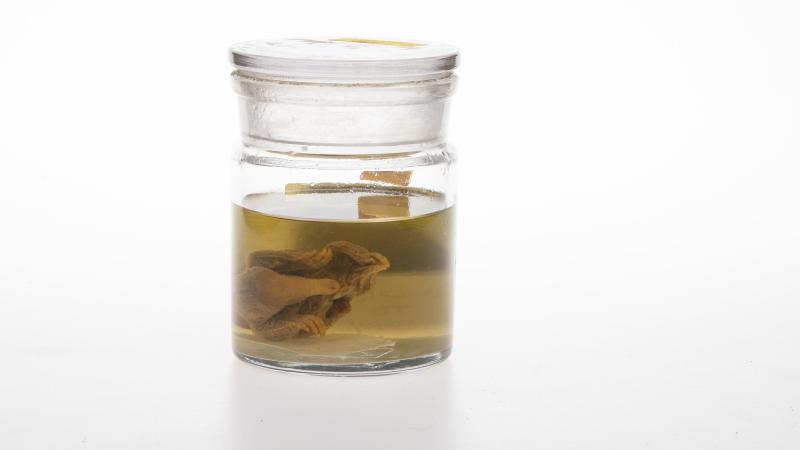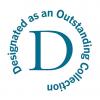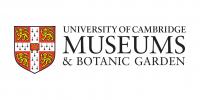What’s in the collection?
A series of platypus, echidna and marsupial embryos and infants which helped to definitively prove that some mammals lay eggs, collected on William Caldwell’s expedition to Australia from 1883 to 1886. The debate over whether platypuses and echidnas were egg-laying mammals underpinned scientists’ understanding of how the natural world was arranged, and was one of the key touchstones for the evolutionary battles of the nineteenth century.

When did it arrive?
Although the specimens were brought to Cambridge in the 1880s, they only reached the Museum between 1987 and 1992.
What do we know about the specimens in Cambridge?
At the time of their collection, these specimens were key to proving that some mammals lay eggs – a fact that changed the course of scientific thinking and supported the theory of evolution. They were likely collected by First Nations Australians.
Until Europeans first encountered platypuses and echidnas in the 1790s, it had been assumed that all mammals give birth to live young. The question of whether some mammals lay eggs then became hotly debated in scientific circles. This collection of little jars represents the huge scientific endeavour that went into solving this mystery.
In the nineteenth century, many conservative scientists refused to believe that an egg-laying mammal could exist, because this would support the theory of evolution – the idea that one animal group was capable of changing into another. For 85 years, European naturalists had been attempting to find proof that platypuses and echidnas lay eggs – including by asking Aboriginal Australians – but any results they sent home were ignored or dismissed.
This collection includes echidnas, platypuses and marsupials at varying life stages from fertilised egg to adolescence. Caldwell was the first to make complete collections of every life stage of these species. He had been sent to Australia in 1883 – with substantial financial backing from the University of Cambridge, the Royal Society and the British Government – to resolve the long-standing mystery.
In an extensive search Caldwell collected around 1,400 echidnas and an unknown number of platypuses with the help of over 150 Wakkawakka First Nations Australians. In 1884 the team eventually found an echidna with an egg in her pouch, and a platypus with one egg in her nest and another just about to be laid.
This was the definitive proof Caldwell had been looking for, and the news was sent around the world. The colonial scientific establishment were apparently only willing to accept this result now that it had been confirmed by “one of their own”.
Considered lost, these specimens were rediscovered as part of the Colonial histories of Australian mammal collections in Cambridge project. Caldwell had returned to Cambridge with a large series of specimens, but until recently their whereabouts was unknown. Having solved the platypus mystery, Caldwell left academia in 1893, but his specimens remained in the University’s Anatomy Department. Letters from the embryologist suggest Grafton Elliot Smith dissected the heads of some of them in 1896, while the rest was left to languish.1 This could explain why there are so few surviving specimens, and why some are missing their heads. It appears that Caldwell’s specimens were not kept together, or recognised for their historical importance.
These specimens were transferred to the Museum of Zoology in two batches, one from the Department of Veterinary Anatomy between 1987 and 1990, and one from the Department of Zoology’s teaching labs in 1992. Both batches contain other monotreme and marsupial specimens which are extremely similar in their preparation and preservation type, which have clearly been associated together for some time in their previous homes. It is likely that those specimens also originate from Caldwell, but this cannot be proven.
Who was William Caldwell?
Scottish embryologist William Hay Caldwell was awarded a first-class degree in natural sciences from the University of Cambridge in 1881 and began his post-graduate studies in embryology under the mentorship of his compatriot Francis Maitland Balfour. At a young age, Balfour was a shining light of British biology with a worldwide scientific reputation. However, shortly after being promoted to professor, he died in 1882 whilst attempting to climb one of Mont Blanc’s unscaled peaks.
Caldwell was then the university demonstrator in comparative anatomy – teaching advanced lectures on invertebrate biology to third-year students only two years younger than him. He was also excelling in the lab. At age 22 he invented the Caldwell Automatic Microtome as a means for cutting extraordinarily thin slices of embryos for use in microscopy, doing so in a way that each slice sticks to the edge of the slice before, so it creates a ribbon of sections in the correct order as you travel through your object of study, all facing the same way.
Not long before he died, Balfour had suggested Caldwell travel to Australia to study the embryological development of the platypus, echidna and lungfish in Australia. Balfour’s climbing accident enabled Caldwell to make the journey. He was awarded the first ‘Balfour Studentship’, set up by the university, which seed-funded a major expedition.
Caldwell reached Australia in September 1883. Travelling to Queensland, Caldwell employed around 150 Wakkawakka people at one time to collect specimens for him. It is probable that the specimens in UMZC are a result of this Indigenous labour. However, it was not an even-handed trade arrangement. Caldwell paid his collaborators in cash for their efforts, which was certainly not always the case with other European collectors, but he ensured that he retained the upper hand in the transactions with some ethically challenge practices. Presumably, since they were based in a remote camp, Caldwell offered the primary means by which the Wakkawakka could spend their earnings, so he was able to control the immediate economy by devaluing the cash he was paying them to maintain a market for echidnas. He paid them half a crown for female echidnas, but then kept changing the price of the supplies he then sold to them. All he had to do to maintain a supply of specimens was ensure that the amount of tea, flour and sugar they could buy for half a crown was of greater value than eating the echidna itself.
Further Reading
Ashby, J. (2022). Platypus Matters: The Extraordinary Story of Australian Mammals. HarperCollins, London. ISBN: 9780008431433
Friday, A., 2016. Francis Maitland Balfour, Department of Zoology, University of Cambridge website.
References
- “Prof. J.T. Wilson, FRS.” Andrew Arthur Abbie Collection, 1896–1936. Wiley Digital Archives: The Royal Anthropological Institute of Great Britain and Ireland. Accessed 10 Mar. 2023.





